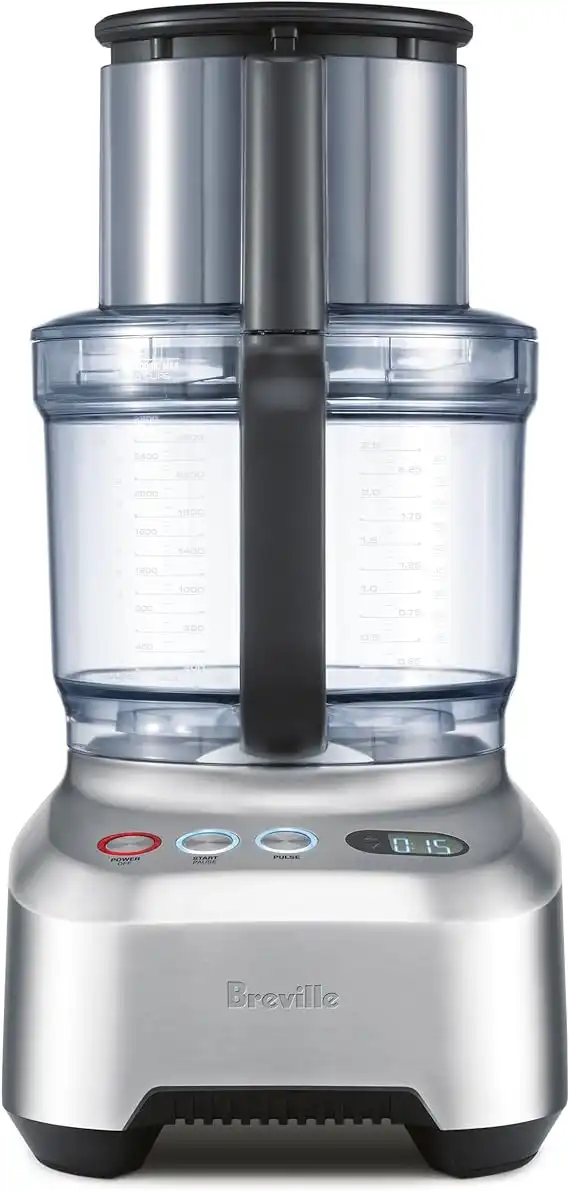Can you make pizza dough with a food processor?
You might have Googled this question a million times, but did you find the honest answer?
Most probably not.
Okay, not to worry; here we will try to do justice to your query.
The PRO’s answer is, Yes, you can! The food processor is the quickest, effortless way to make any bread dough, including pizza. It is by far the easiest dough you’ll ever make.
But it has tricks because the food processor is so powerful that inadequate mixing may ruin your dough.
So, in this piece of writing, we will show you the best way to use such a versatile kitchen gadget to make the perfect pizza dough.
So let’s get started!
Here’s What You Will Find:
Food Processor Pizza Dough Mixing Methods
Can You Make Pizza Dough with a Food Processor?
Hand-kneading, stand mixer, and food processor are the three methods for making any yeast dough.
The main advantage of having a food processor is that it saves a significant amount of time.
Now, the real question is, when there are many options available in the market, we all get confused about what to use, hand kneading, stand mixer, or food processor.
You might have found yourself in the same dilemma.
So below, we are going to put light on this matter.
Pro Tip
Most food processors have a line on the plastic bowl indicating how much liquid is safe to add to the bowl.
However, Is best if you never fill the base more than a quarter of the way—a third, tops. Otherwise. the machine will agitate the liquid, causing it to splash up and out of the bowl.
Tips on Food Processor Pizza Dough
Below we will cast light on some tips for making pizza dough or bread dough with a food processor.
Blade
Blade Plays an Important Role. The standard plastic or dough blade is much superior at efficiently and quickly shaping and kneading the flour.
Whether you are using a plastic or metal blade the kneading process in the food processor takes 4 turns of either the 12-15 or 20-second interval.
Temperature
Use Chilled Water – The forceful motion of a food processor generates pressure, which transfers a lot of energy into the dough. When making dough in a food processor, use cold water, and cooled or iced liquids to mitigate this effect, destroying yeast and stunting both dough rise and taste.
Ingredients
Add Liquid Ingredients– When the machine works, add the liquid ingredients to the dry ingredients to ensure they are combined quickly and uniformly. If you add the liquid to the dry ingredients and switch on the food processor, the liquid will overflow and cause a mess.
Kneading
Don’t Over-Knead – Do not even over-knead the dough; the heat from the processor will increase the temperature of the dough, affecting the dough’s consistency.
Food Processor Pizza Dough Method
Mixing Pizza Dough in Food Processor
Many pizza dough recipes always include hand-mixing instructions and a stand mixer. Although mixing in a food processor, an increasingly popular option is not covered.
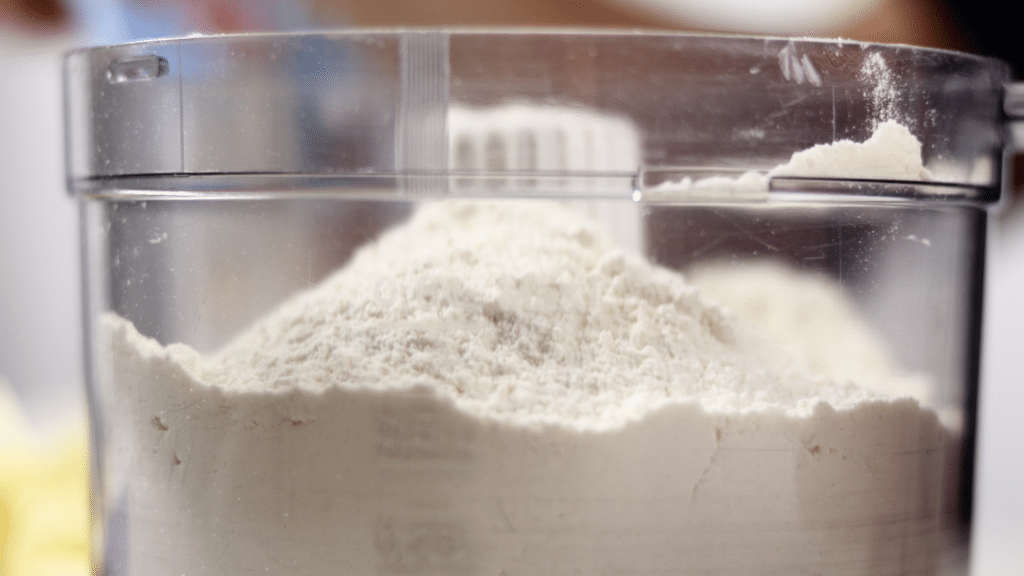
You can make any yeast dough using a food processor.
How does the food processor compare to a stand mixer?
Let’s see.
Pizza Dough Food Processor vs. Stand Mixer
Stand Mixer
When it comes to using a stand mixer or food processor, we find ourselves in confusion. Stand mixers are kitchen gadgets that can save time and all the manual effort when baking and cooking.
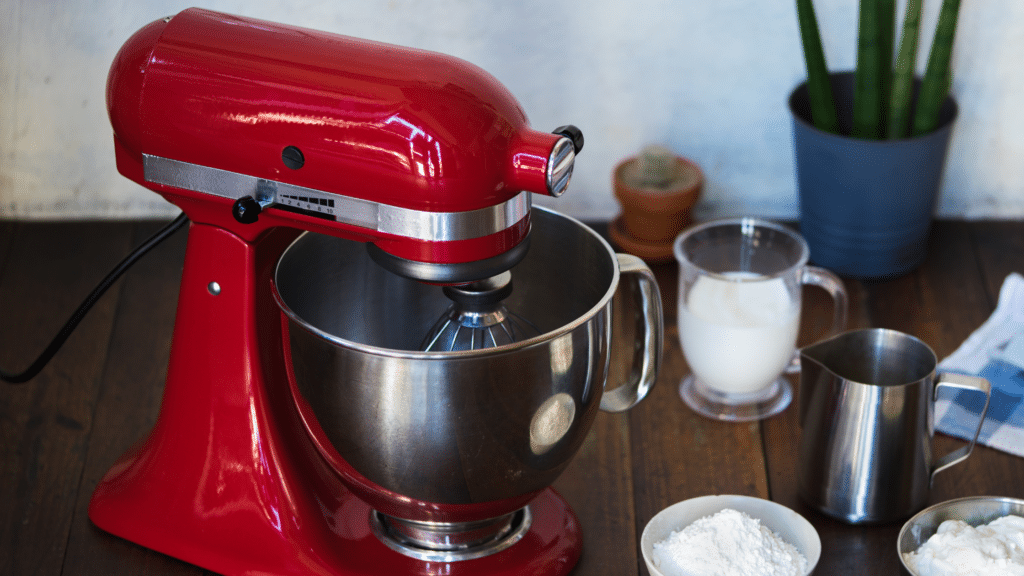
Stand mixers are convenient when trying to make doughs, sauces, purees, and creams. A set of stands with a lever-operated hand, aka tilting arm, plus a portable bowl and blending heads are standard components of a stand mixer.
The mixing points are connected with a gear system, which combines the ingredients for you. Most mixers have multiple mixing speeds, allowing you to monitor the ultimate consistency of food.
When using a stand mixer, try putting the ingredients in the bowl, mount the container to the table and the proper mixing end to the lever-operated arm, and control the settings to your preference.
For our pizza dough recipe, we use both a food processor and a stand mixer to make pizza dough.
On the other hand, a food processor is a household item that does the blending, chopping, slicing, and dicing for you. You will use it to mince beef, chop vegetables, slice onions, create soups and creams, and produce purees.
Food Processor
Consider a food processor a solid and versatile kitchen instrument that combines with a blender and knife. Unlike a mixer, it needs little or no fluid to work. Plus, it does all the choppings quickly.

A food processor is the best device for you if you prepare food regularly and cook for a big family. Now the question is, which food processor to prefer for pizza dough?
Food processors are suitable for “extreme gluten production” bread, such as bagels, entire wheat loaves, and other baked goods made with high-protein flour.
Pizza Pun
The food processor didn’t do as it was supposed to.
It blended the rules.
Pizza Dough Food Processor vs. Hand Mixing
Which one is better?
Hand mixing or food processor? There is no denying that hand mixing is the best option when it comes to pizza dough.
However, it will require a lot of effort and time, while a food processor will make the work easier for you.
The methodology of hand-kneading has the benefit of not needing any special tools. And it can be achieved almost anywhere there is a flat surface.
In the end, it will give you the best results.
Mixing Dough by Hand
The big benefit of using a food processor is that it saves a tremendous amount of time.
For example, if you hand knead or use a stand mixer, it usually takes around 15 minutes from start to finish. In a food processor, you can make the dough in less than 5 minutes from start to finish and the added bonus is that usually, the dough will rise faster because it is slightly warm after kneading.
The disadvantage of hand kneading is that it can be painful for certain people’s hands and wrists. It also needs some time.
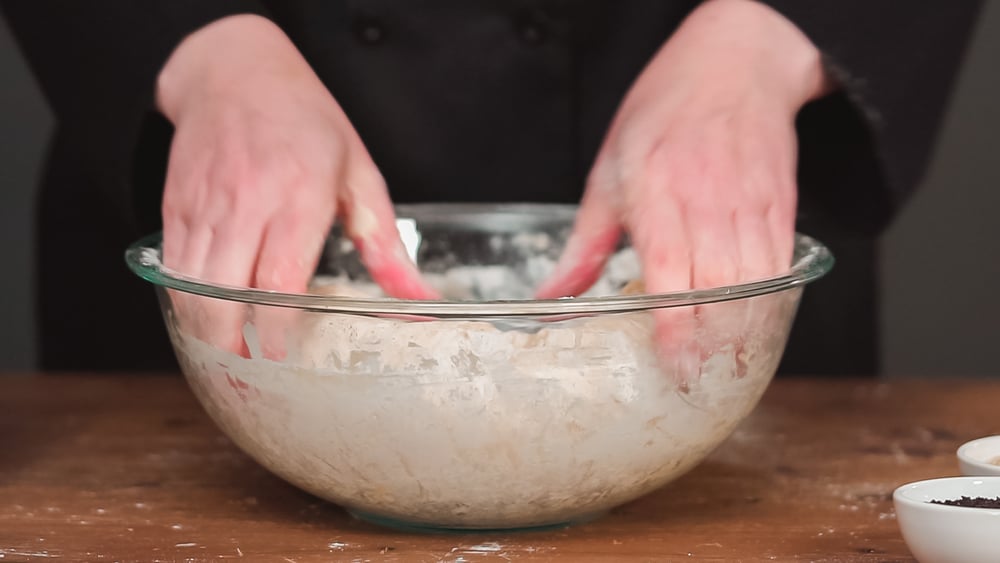
While on the other hand, a food processor will knead dough in as little as a minute in some situations.
It also heats the flour as it processes because if you need to knead it for a more extended period regularly, you risk warming the dough to the point that the yeast dies.
So if you are in a rush or have many batches of dough you need to prepare, the food processor could be the way to go.
How to Mix Pizza Dough with a Food Processor?
The food processor also helps you make sure that the dry and wet ingredients are evenly incorporated and helps you avoid any unpleasant unmixed pockets of flour.
To make bubbly, airy, and deliciously chewy pizza crusts, you have to work the dough to build up gluten.
Gluten is formed by a solid web of cross-linked proteins that traps gas bubbles and grows as the dough cooks.
You have to knead the dough for it to develop gluten, but getting enough gluten when you’re working with a wet mixture like pizza dough may take up to 20 minutes, especially if you’re kneading by hand.
You can use a stand mixer, but by far the quickest, most effortless way to work almost any dough is using the food processor
We use the dough blade as the metal blade is too strong for pizza dough.
The trick for mixing dough in a food processor is to use the pulse button initially and mix until the ingredients are hydrated and form a ball. Then let the dough rest for at least 5 minutes or up to 20 minutes before mixing again. The resting period allows the flour to absorb the water thoroughly.
Otherwise, the food processor combines the dough before the developing gluten can handle the agitation, tearing the strands and damaging the dough.
The quick motion of a food processor’s blade will transform dough into a flexible dough ball in minutes with little effort.
Pizza dough mixed with a food processor
The food processor also ensures that the drier ingredients are appropriately combined and that there are no undifferentiated pockets of flour, resulting in the most seamless dough in a matter of time.
Because food processors spin at high speeds, it only takes a minute or two for the dough to come together.
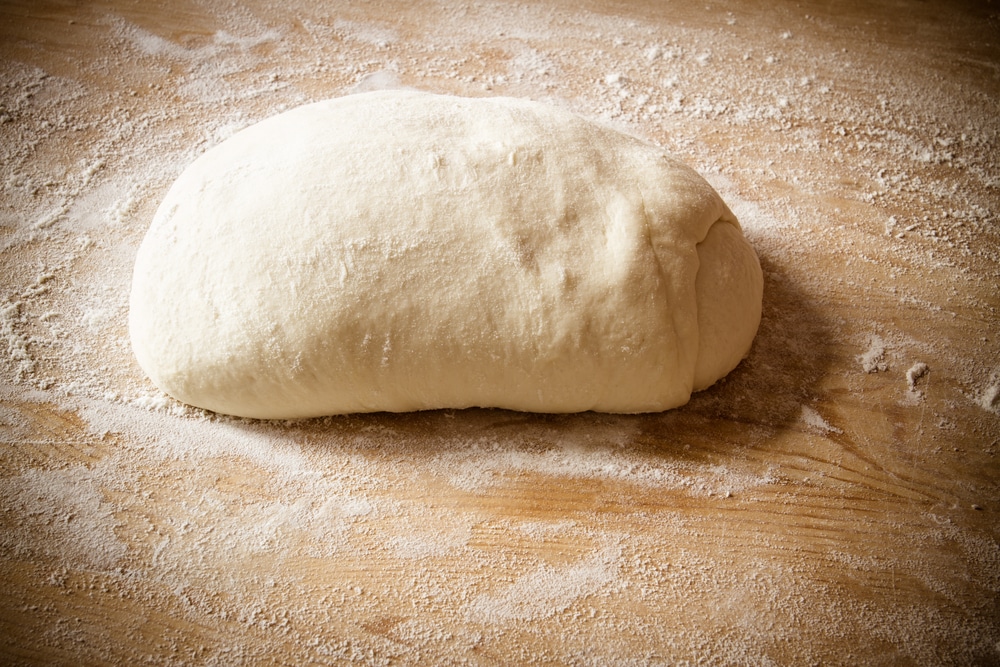
When you resume mixing, use the “On” button and mix for an additional 45 to 60 seconds. The short rest period followed by the short final mixing cycle is all you need to complete the dough.
If your dough requires longer kneading, it’s best to do so in short sessions with waiting time in between to let the dough cool off.
Here are the steps when using a simple pizza dough recipe.
Step 1
Gather all the ingredients the recipe calls for and preheat the oven if you plan to have pizza the same day.
The first step is combining yeast and sugar in a work bowl of 165 grams of lukewarm water. Allow the yeast to rest for around 10 minutes or until it is fully foamy.
Step 2
With the dough attachment installed, briefly pulse 250 grams of high-protein flour and 6 grams of salt in the food processor. Be careful with the salt, as too much salt will kill yeast. Only enough to get them together.
Step 3
Start slowly adding the yeast mixture into the feed tube. The mixture will be gently stirred into your flour. The dough would shape a ball and draw away from the sides of the bowl after about 45 seconds.
Restart the pulse process, slowly add the olive oil into the feed tube, and then phase for another minute.
Step 4
Remove the dough from the bowl with caution. Lightly dust the dough and flip it so that the top is now on the bottom. You can place it on a baking sheet to avoid having the flour all over the counter. You may want to knead it by hand for about a minute to shape it up. Try to avoid over-kneading.
As a result, you get sweet, soft pizza dough.
When your dough is kneaded to the right point, it should have a smooth, almost shiny appearance, thanks to the olive oil. A good test is pulling the dough: pinch it and pull, it should feel very elastic and should spring back into place.
What Is The Best Size Food Processor for Pizza Dough?
A generic 11-cup processor is a decent fit for all those searching for a classic, mid-sized processor that can accommodate bulkier products like pizza dough and large-batch recipes. Just make sure it includes a plastic dough blade.
Though the average family would not need a skilled, restaurant-sized processor, for those who often prepare big-batch products for parties or potlucks, a massive mixer with a large 16-cup bowl would suffice.
A compact processor with a 3-cup bowl is ideal for individuals and others who plan to use their processor for cooking smaller portions of foods, liquids, dips, and more.
It can suit your requirements while reducing clean-up and substantially smaller storage capacity.
Which Attachment Should You Use to Mix Pizza Dough in a Food Processor?
Plastic Dough Blade
This is a common question most of us struggle with.
Which attachment to mix pizza dough in a food processor?
To mix pizza dough, use a kneading dough hook or plastic blade at the lowest speed possible.
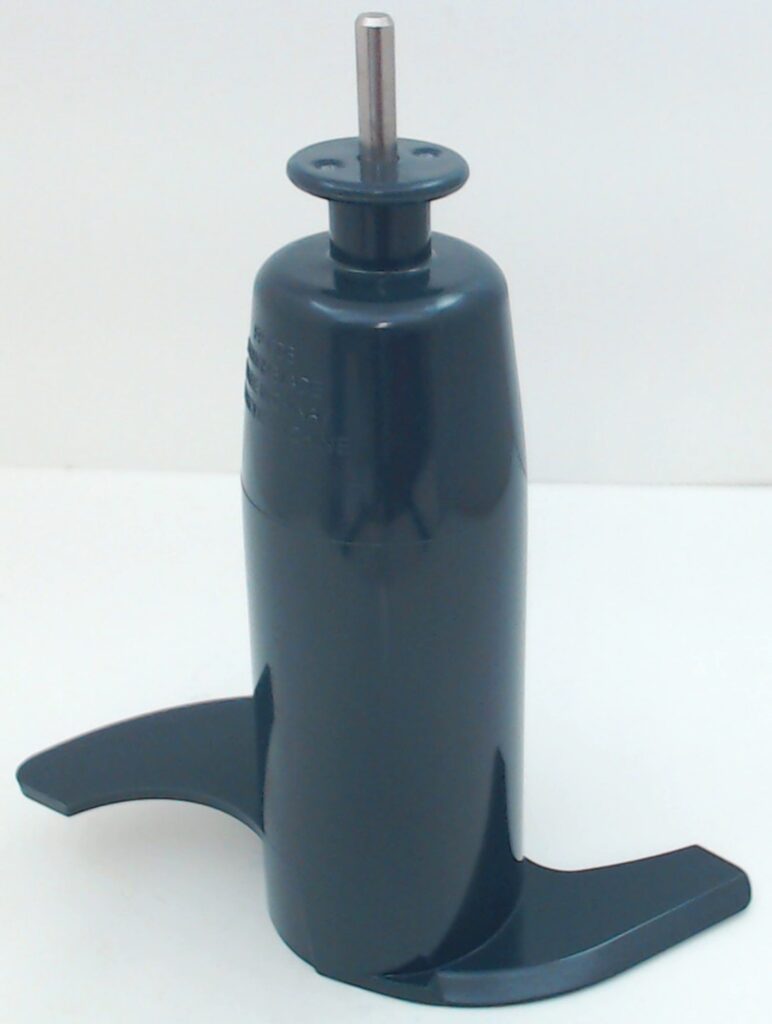
The regular dough blade is far better at forming and kneading the dough quickly and effectively.
Not all food processors come with dough blades, so before buying one ensure it has a dough blade.
What is the Best Food Processor for Pizza Dough?
Now all the choices come down to which food processor to choose when making pizza dough. With a range of sizes and features to match any maker, these food processors help you chop, mix, puree, and even knead dough smoothly.
To overcome this dilemma, we have listed the two top options available in the market.
Breville Sous Chef 16 Pro
Breville is a well-known Aussie brand producing award-winning household items for over 80 years. The good, hardworking Sous Chef lives up to the hype as a cook’s right-hand man, with various chute choices, a quick-acting S-blade machine, and eight precision tools.
Many people who cut, grind, or shred would undoubtedly find the Sous Chef worth it.
Breville Sous Chef 16 Pro
Regarding flexibility and ease of use, the Breville Sous Chef 16 delivered on both fronts. The micro-serrated S-Blade reliably chops or slices vegetables, resulting in uniformly baked breads, airy loaves and beautifully prepared meals.
The rapid action of this food processor’s blade can turn dough elastic in just minutes with almost no effort. The food processor also helps ensure that the dry and wet ingredients are evenly incorporated and helps avoid unmixed pockets of flour for the most effortless dough you’ll ever make.

The Sous Chef will soon become invaluable if you cook for a large family or bunch of mates regularly.
Cuisinart Elemental
Cuisinart’s legacy of creativity and peak production influences the next century of kitchen equipment.
Cuisinart Elemental
The exclusive proprietary SealTight Advantage System seals and locks the blades while increasing bowl capacity, processing speed, and spill-free pouring. The Supreme broad tube accepts larger foods with ease.
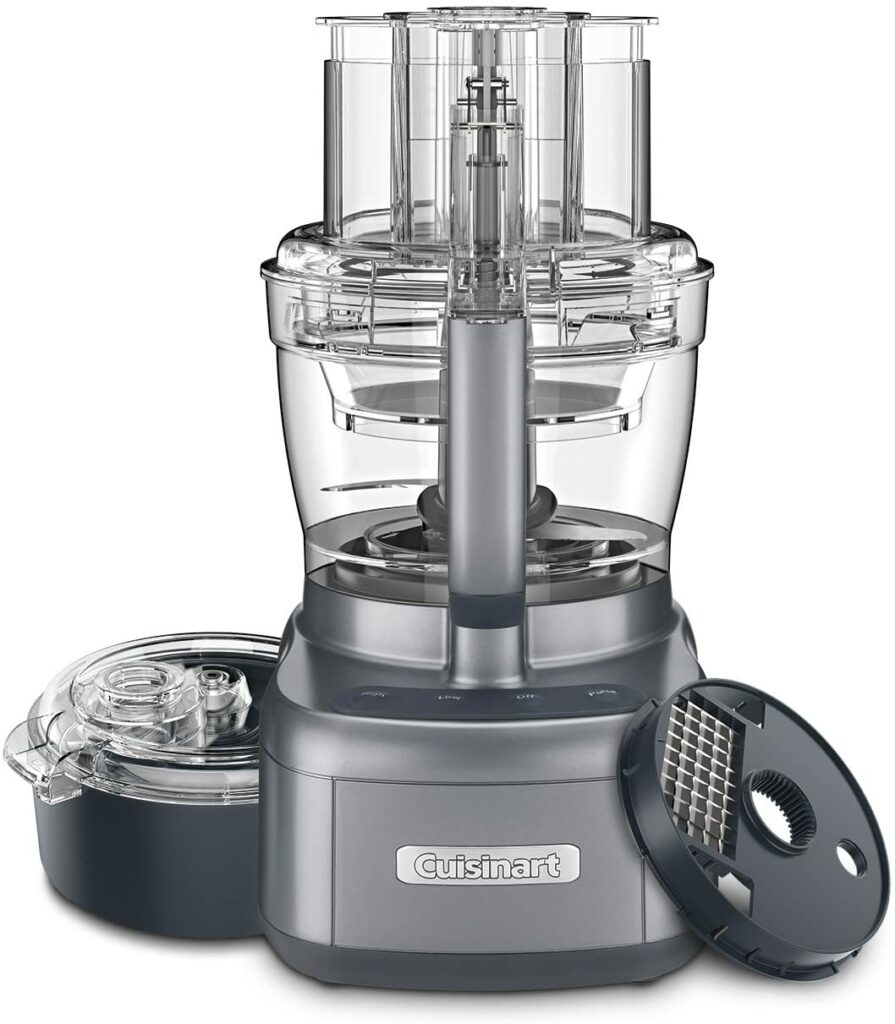
Here’s What the PROs at Homemade Pizza Pro Use and Recommend
Whether you’re turning nuts into nut butter, perfectly slicing carrots, or another chopping, dicing, shredding, or kneading, this workhorse delivers perfection every time. With 3 feed chute options and 8 precision tools, the Sous Chef 16 Pro brings professional prep to any kitchen.
Last Slice
That’s all!
Here we have tried to do justice to the question: “Can you use a food processor to make pizza dough.”
The obvious answer is you can give a food processor a try as it saves time and effort, but the main takeaway is to use it properly.
But many people struggle with picking the best food processor for dough making, which is why we have listed the top two choices available in the market. The rest is up to you and your personal preference.
So don’t dwell in confusion anymore!
Try it out, and let us know how well your pizza dough works out for you in the comments section.
Enjoy!
Not a PRO? Not a Problem!
Take a pizza class to bring your pizza skills to the next level,
so you can be a PRO!
Related Posts

Costco Pizza Delivery: Find How You Can Get It Now!
the PROs
People go to Costco’s food court for many different reasons, but the cheesy slice of pizza they serve is among …

Pizza for Beginners: Don’t Buy Pizza, Make It! Here’s How to Get Started!
the PROs
You have this idea that you want to make pizza at home as opposed to ordering it, but where do you start? Don’t worry! Here you will find answers and directions to all your questions.

Pizza Toppings Under Cheese or Over Cheese? [Why the Order Matters]
the PROs
Is Pizza Cheese on Top or Bottom? Hey pizza lovers, are you wondering if you should layer pizza toppings under …
Newsletter
Subscribe to our Recipe of the Week newsletter and receive our partners’ latest recipes, tips, and discount offers.
Keep in Touch!

